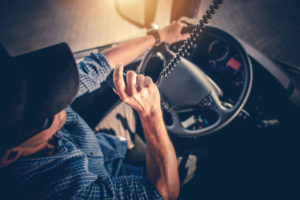By Ryan Smith
via Chicago Sun-Times, February 10, 2019
Human beings are still in the driver’s seat at this year’s Chicago Auto Show — but drivers may soon be an endangered species.
At this year’s Consumer Electronics Show in Las Vegas, rows of booths showcasing the latest gadgets were dotted with displays from automobile makers presenting vehicles like Toyota’s Research Institute’s TRI-P4: a Lexus LS sedan able to drive itself.
Experts praise self-driving cars for their life-saving potential and convenience, paving the way for an autonomous vehicle future. Most major car manufacturers, as well as ride-sharing giants Lyft and Uber, are currently testing different versions of the technology across the United States.
Lyft’s autonomous car program in Las Vegas has been fully functioning since May 2018. In October, Ford Motor Company announced it would expand its autonomous testing program to Washington, D.C. in 2019, joining tests in Detroit, Miami and Pittsburgh. Ford also is partnering with Domino’s to test self-driving pizza deliveries. Cruise Automation, a self-driving start-up owned by General Motors, announced a similar partner- ship with food delivery service DoorDash.
Autonomous Illinois
While it’s not on the list of autonomous test cities, Chicago is nurturing its own self-driving revolution. It’s home to Innova EV, a car company started in 2012 by Roman Kuropas. Innova EV is focused on two versions of a small 1,100-pound electric vehicle called the Dash: one you drive, one you don’t. The autonomous version of the Dash is being tested on college campuses in Ohio, Colorado and Wisconsin.
Kuropas says plans are in the works to bring autonomous car testing to Illinois, where limitations have kept self-driving development stuck in neutral.
A new state law went into effect in June that prevents local municipalities from banning autonomous cars. In October, former Gov. Bruce Rauner signed an executive order directing the Illinois Department of Transportation to develop a program to test and plan for the arrival of automated vehicles.
“This technology is here, and Illinois is ready to embrace it,” Rauner said. Shortly afterward, the state launched Autonomous Illinois — a new testing program for connected and automated vehicles.
In Chicago, self-driving cars are one of the big-picture projects on the list for Mayor Rahm Emanuel’s Transportation and Mobility Task Force, which met for the first time in October. One of the task force’s ideas is an autonomous vehicle pilot program that could include a route for self-driving cars connecting the Loop to McCormick Place.
“There’s a lot of potential in Chicago, especially with all of the tech companies based here,” said Sharon Feigon, executive director of the Shared Use Mobility Center, and a member of the mobility task force.
Advocates say that in Chicago, the ideal scenario for self-driving cars is one in which people give up their own personal vehicles and instead opt for a cheap, shared ride in combination with public transit. Instead of hopping in your car to avoid a rain-soaked wait at your nearest bus stop, you order a self-driving car on your smartphone that takes you right to the nearest Metra or the Red Line station. Or for about the same price as a CTA ride, you take a smart shuttle that gets you to your destination in half the time, with a reduced collision risk.
That last part is key: Ninety-four percent of traffic accidents have been linked to human error, and automotive fatalities in the U.S. topped 40,000 for both 2016 and 2017, according to the National Safety Council. “America has a blind spot when it comes to traffic crashes. It’s a serious problem,” says Ron Burke, Executive Director of the Active Transportation Alliance. “We’re optimistic that new technology could greatly lessen the probability of crashing.”
The road ahead
If you’re getting excited about the prospect of self-driving cars, pump the brakes. You may have a robot chauffeur someday, but not in 2019.
The path to driverless cars, or “full driving automation,” as the Society of Automotive Engineers calls it, has been bumpier than expected.
“A couple of years ago, a lot of us thought [autonomous vehicles] would happen really soon. But there’s still a lot of issues with it,” said Feigon. “It has a lot of potential, and the technology has been good, but it’s not perfect, and there’s a lot of work to be done.”
Self-driving cars don’t just have a technology problem — in some ways, they also have an image problem. In Arizona, locals in suburban Phoenix have been slashing tires and throwing rocks at autonomous vans being tested by Waymo, the driverless car company spun off from Google.
A Pew Research Center poll says that more than half of Americans are worried or somewhat worried about self-driving vehicles and don’t want to ride in them. That poll was taken months before an autonomous Uber SUV killed a pedestrian in Arizona in early 2018, highlighting flaws in the company’s software and raising new concerns about self-driving tech.
These issues are causing industry and transportation experts to extend the timeline for fully autonomous cars until 2030 or possibly 2040. Kuropas estimates that wholesale adoption of self-driving cars is at least a decade away.
“We think there will be a driver behind the wheel for quite a long time until the time when people feel comfortable with autonomous,” said Kuropas. “We’re cautious, we’re crawling. There’s no sense of being overly aggressive.”
Some Chicagoans say they’re OK with that.
Hana Zickgraf, 28, of Hyde Park, says she acknowledges the safety benefits of self-driving cars but doesn’t like being confined to the passenger seat.
“I associate driving with individual freedom and opportunity, and it’s super fun,” said Zickgraf. “It has the effect of calming me down when I’m anxious.”
Karen Hayes, 37, of the Loop, has gone without a car for most of her 15 years as a Chicago resident, but bought a Porsche last month because she missed “that adrenaline rush you get from driving.
“I’d much rather drive than ride,” she said.
See original article in the Chicago Sun-Times.
Learn more about PTIO here.

